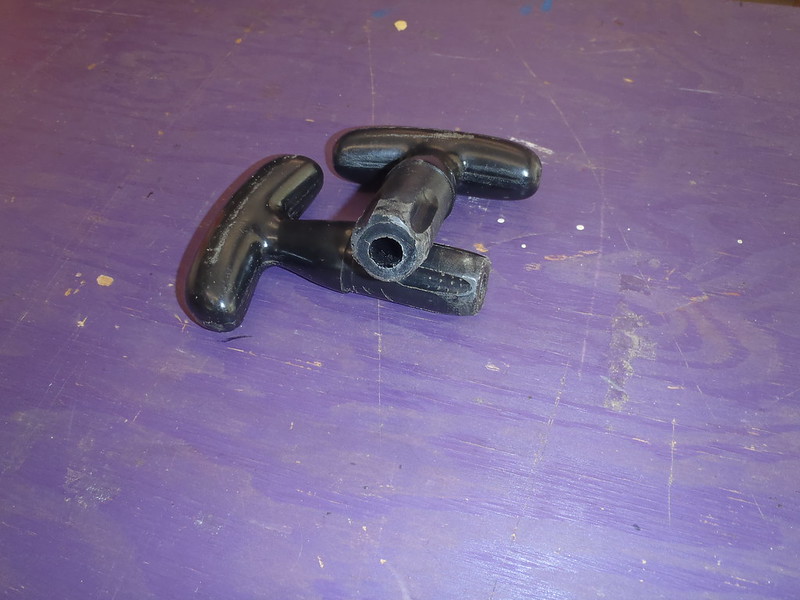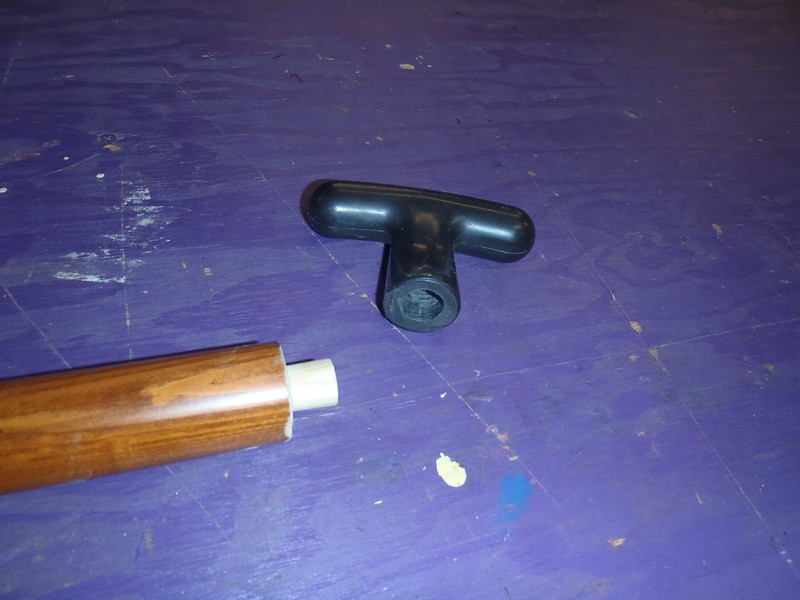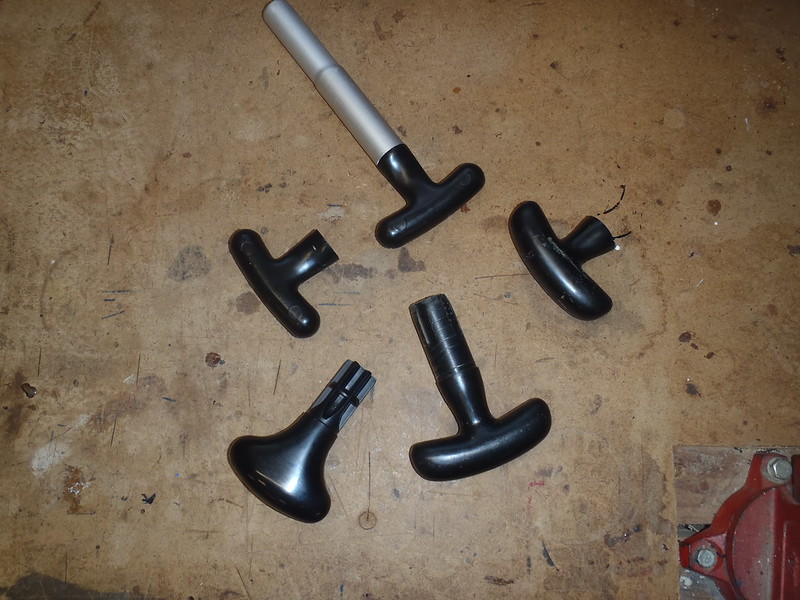G
Guest
Guest
He . . . . laughed when I mentioned throwing in the “vintage” 270cm (!) Klepper paddle, saying he had the same-useless several. Can’t give them away. (I might cut the ferrules off one, cut the shafts down a touch and add single blade grips
I have two of those unvaluable Klepper 270 wood doubles. The shafts are round, not indexed, a hair over 1 ¼” diameter and the (lack of) balance-in-hand is weird. Both have carbon fiber tow & epoxy edging around the blades for wear prevention.
 P4290006 by Mike McCrea, on Flickr
P4290006 by Mike McCrea, on FlickrOne still has the original square tips with metal bang tips. 62 freaking ounces.
On the other one I removed the metal bang tips and reshaped the blades tips. Of course that’s the one with the PITA tight ferrule connection that takes two people twisting and pulling to get apart.
 P4290007 by Mike McCrea, on Flickr
P4290007 by Mike McCrea, on FlickrI’m never going to use either of them in their current guise (might try to foist off the one with working ferrules again on the next boat buyer). So I cut the PITA ferrules off the one with the reshaped blades, and now hhave a grip-less 51 incher that weighs 24oz, and a grip-less 48 inches that weighs 23oz.
 P4300009 by Mike McCrea, on Flickr
P4300009 by Mike McCrea, on FlickrI may cut the two halves down shorter still, so they are 46 or 47 inch from grip to tip; shorter single blades work better in a decked canoe. (Well, IMHO, “better”, in descending order, a long carbon double blade, or a filled downwind sail combined with a single blade or bent shaft).
That was my usual long way of asking the original question. I want to add grips to those reshaped, shortened Klepper halves. With the cupped blades preferably something directional, a modified pear grip or the like.
Not DIY carved. The only thing I have is a 2 ¼” thick slab of 18” x 6” red oak, a already a kiln dried end scrap slab board from the mill when I scavenged it 10 years ago (thanks Nightswimmer). Tt has rested unused in the shop ever since, and is enough to cut and carve and file and sand a half dozen wood grips.
 P4300011 by Mike McCrea, on Flickr
P4300011 by Mike McCrea, on FlickrThat sounds like a tremendous amount of effort to shape grips two junk paddles, so I’m looking for a source to buy new ready-made grips. I don’t care if they are pear shaped, symmetrical or even tee grips, nor if they are plastic or aluminum (don’t think I’m paying for carbon fiber for those POS’s).
But, for my simplistic grip replacement they need to be hollow shaft, so I can shave down the top of the Klepper paddle blades to fit inside. Close to 1 ¼” inch outer diameter, but I could taper the top of the stuffed inside shaft a bit of need be.
Not these, too slender a “neck”, not hollow enough,
 P4300018 by Mike McCrea, on Flickr
P4300018 by Mike McCrea, on FlickrKinda not these. If I’m going aluminum tee grip I’d rather have the wider female ends of those aluminum Mohawk tee grips. I don’t believe Mohawk’s plastic bent shaft Pear Grip is hollow shafted, but $2.75 for six or more the tee grips would be a rudimentary solution,
 P4300021 by Mike McCrea, on Flickr
P4300021 by Mike McCrea, on FlickrAnyone have source ideas for a ready-made hollow core pear grip?























